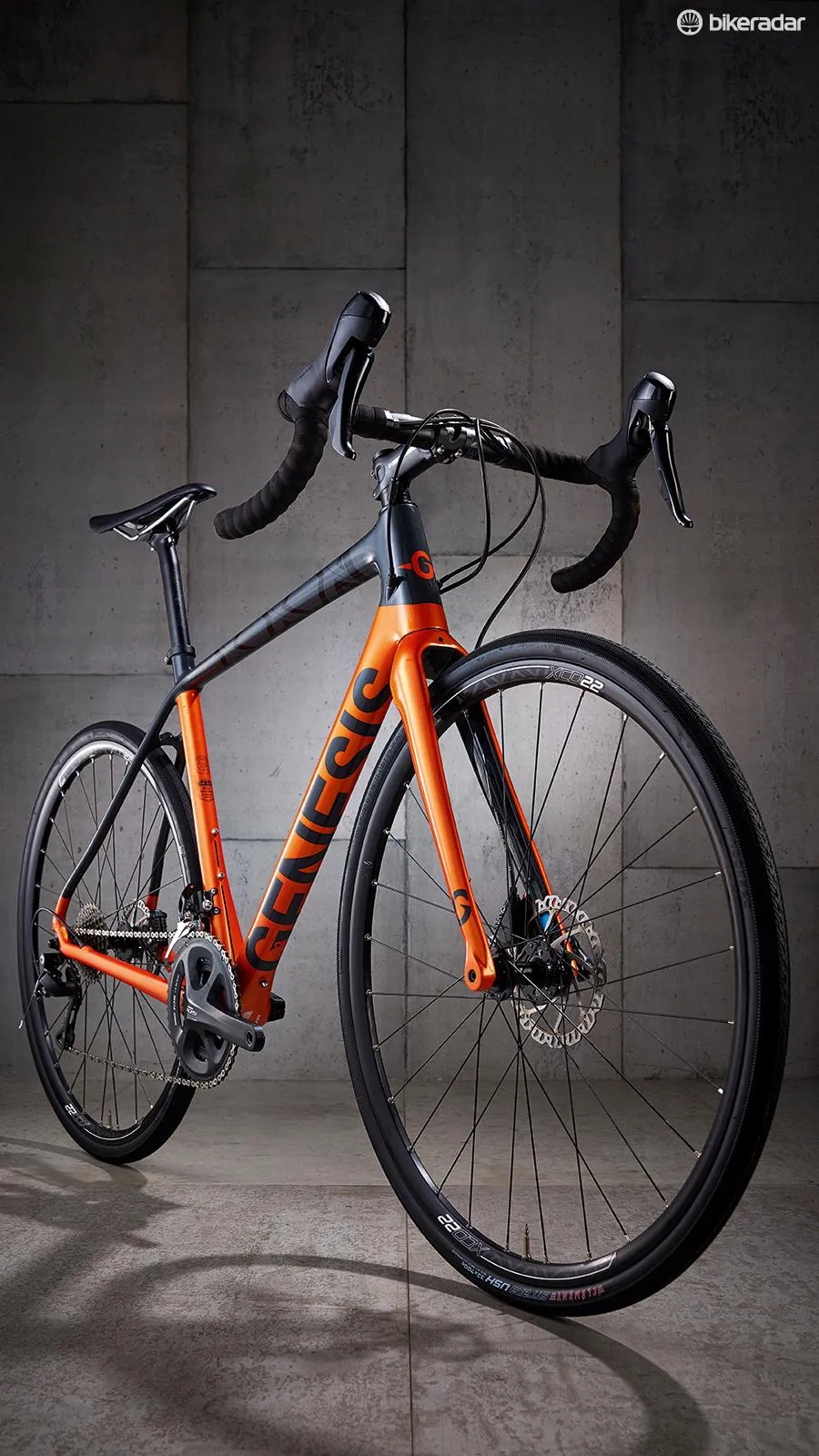Heading into its third year, the Genesis Datum has its work cut out to compete in a bike genre that’s rapidly changing. However, a sweet riding frame and tyres offset hefty wheels to keep it a dynamic delight on the road and off.
The 24/30t modulus frame with 1.125-1.5in tapered top full carbon fork has received rave reviews since it appeared so we can see why Genesis isn’t in a hurry to change what isn’t broken.
The tapered and sloped top tube, scooped back seat tube and flat spring stays still give an outstanding ride. Shimano Di2 electric shift compatibility, three bottle cage mounts, discreetly hidden mudguard fixtures and enough room for 45mm mudguards and 33mm tyres, or larger tyres without mudguards make it very versatile too.

I’d rather it had a screw-in rather than press-fit bottom bracket standard, and at 1.9kg for the frameset it’s not light.
The fact it uses a mountain bike standard 15mm front axle rather than the road standard 12mm, and the back of the frame uses a quick-release not a bolt-thru axle also dates it slightly. I never suffered any back wheel security issues though and most wheels can still be configured like that, so upgrading shouldn’t be hard.
That would be the first thing I’d upgrade as, while they’re tough, the Jalco 29er mountain bike rims, plain gauge spokes, Formula hubs and basic brake rotors build into a hefty setup, and they’re not tubeless either. The centre ridge, herringbone shoulder Clement Strada USH tyres are impressively fast rolling but grippy in gravel (or worse) corners.

Apart from the under-palm lump on the shifters, which some testers hated, there’s nothing to gripe about with the Shimano 105 stop and go kit. While I liked the 16-degree outward flare of the bar on descents, the compact curve does make it hard to reach the levers in the drops, even if you’ve got big hands, so small paw riders could really struggle.
The strength of the Datum is that despite a few niggles, the ride quality of the Genesis managed to consistently keep it top of my enjoyment charts. It might be heavy compared to bikes such as the Scott Addict 20 disc, Whyte Wessex and Specialized Roubaix Elite that were also on test, but the muscular main tubes and tapered chainstays give it an encouraging spring up to speed whenever you press the pedals.
The slightly longer and lower than average for its category ride position, and fast rolling Strada tyres, have no trouble turning that into sustained speed on the road. Its stretched front end, flared bar and 72-degree head angle underwrite a safe and stable feel that lets you push hard through corners or off-piste sections even when things get greasy or gravelly.
Careful composite layering, a 27.2mm seatpost for forgiving flex and the leaf spring seatstays mean it skims and skips over rougher sections remarkably well. It always felt dynamic and encouraging rather than just damped and dutiful whenever I rode it, and was always being borrowed and taken home for extra helpings by our test team.





